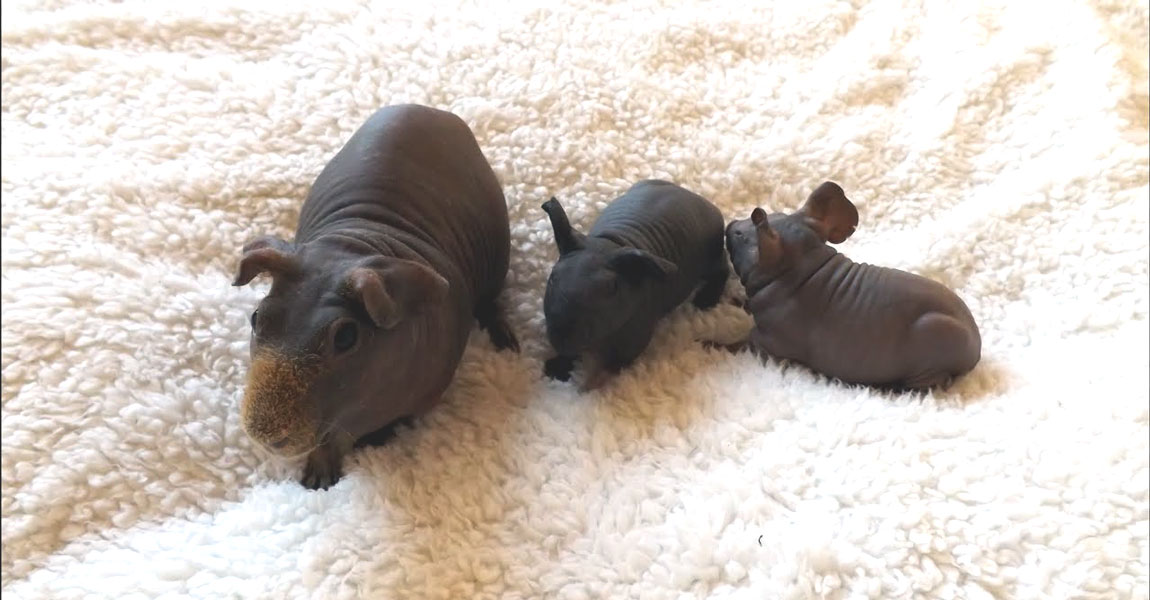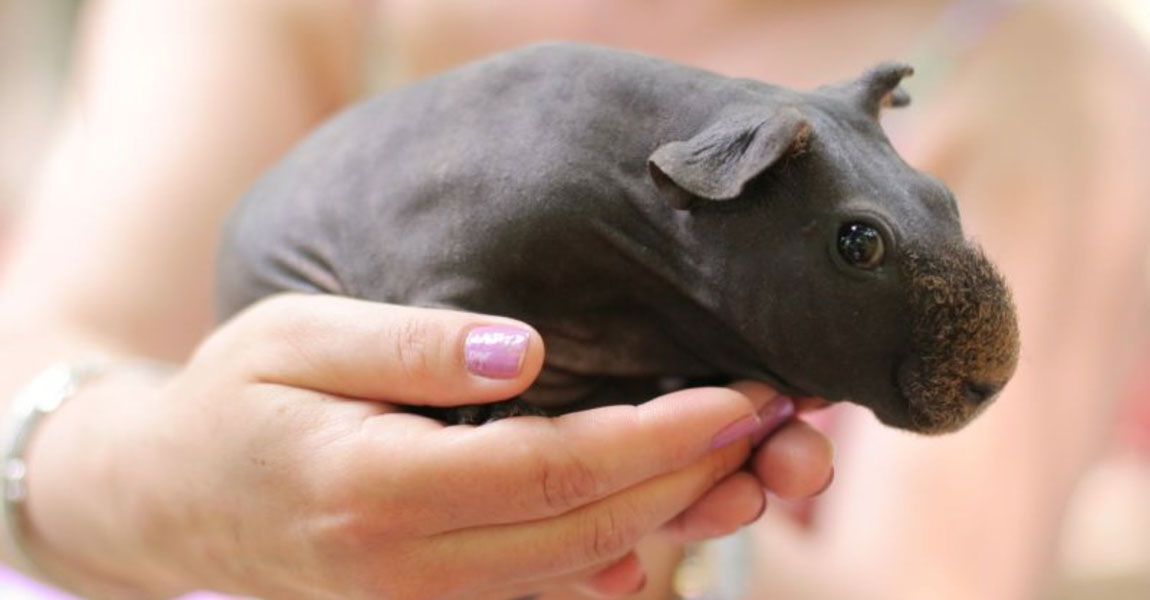What sort of housing should I provide for my guinea pig?
Guinea pigs can be housed within several different designed enclosures, the most suitable being:- Wooden hutch with a wire front and/or sides with or without a connected run.
- An indoor plastic cage.
- A custom made house made from a plastic base and metal sides.
NOTE: Wire mesh floored cages are not suitable to use of guinea pigs due to their delicate feet and can cause bumble foot and injuries to their legs.
The minimum space required for two guinea pigs as advised by the RSPCA is 120 x 60 cm (4 x 2 ft), but more space is ideal. The enclosure can be open at the top, provided the sides are at least 7-8 inches high to prevent escape, but care should be taken to provide safety from other household pets such as cats and dogs.
Enclosures that provide solid flooring and an adequate supply of a preferred bedding are best for guinea pigs. They should be easy to clean, well-lit and adequately ventilated. Plastic topped cages are not ideal as they do not provide adequate ventilation and can cause ammonia build up within the enclosure, leading to respiratory problems.
Guinea pigs seem most comfortable when they are spared exposure to excessive noise, needless excitement and other stresses. Sudden movement should also be prevented. Guinea pigs have 2 types of reactions when startled by a loud noise or sudden movement or when placed in a strange environment, they may “freeze” completely motionless (for up to 20 minutes), or they may panic; panic involves erratic running and leaping, often accompanied by shrill squealing. Groups of guinea pigs may stampede in a circle, often trampling the younger residents within the enclosure.
Guinea pigs should never be housed with rabbits, mainly because they both have different dietary requirements, rabbits may injure a guinea pig unintentionally by kicking, a rabbit might bully a guinea pig, and both species communicate in different ways so they won’t necessarily ‘understand’ each other!
If, however, you already have a guinea pig and rabbit living together quite happily, it is best not to separate them as this could cause them both unnecessary stress and cause more problems than if they’re kept together.
Do they need to be housed indoors or outdoors?
The ideal environmental temperature range for a guinea pig is 18-24°C/65-75°F; this must be considered when choosing where to house your guinea pig.If your guinea pig is going to be housed outdoors, they should be brought inside during the winter months or at the very least moved into a heated shout or outhouse as they do not withstand drops in temperature. Outside hutches should be sheltered from the rain and not in constant direct sunlight to prevent overheating.
What bedding should I use?
Bedding must be clean, non-toxic, absorbent, relatively dust-free and easy to replace.Wood shavings made from pine or cedar should be avoided as they have been linked to respiratory irritation and skin irritation in some rodent species.
Hay, straw and paper based bedding can be used. Some owners prefer to use vetbed or fleece and/or towels as bedding, but these should be washed on a regular basis.
What should I put in the cage?
Guinea pigs are prey species and should always be provided with somewhere safe to hide away if they feel threatened; ensure they have hides such as igloos, tunnels or log bridges. Guinea pigs also like their creature comforts, and will appreciated either an area of deep hay to sleep on, or fabric beds to curl up in.Hay can be offered in many ways, but by offering it in a rack this reduces the amount the guinea pig urinates and defecates on it.
Water can be offered in either a bottle dripper or a bowl, or both! Pelleted food can also be offered in a bowl or scattered on the floor.
How often should I clean the cage?
The frequency with which the enclosure is cleaned depends on its design, the materials out of which it is made, and the number of guinea pigs that reside within in.As a general rule of thumb, the enclosure and all cage “furniture” should be cleaned and disinfected once a week. Food and water containers should be cleaned and disinfected once a day. More than one set of containers should be maintained, and the soiled set should be washed in a dishwasher, if possible.
Vigorous scrubbing of the enclosure and “furniture” with hot water and soap and a thorough rinse should be followed by use of a disinfectant. Vinegar is often required to remove the scale deposited by the crystalline urine of guinea pigs.
Source: HallamVets.co.uk





